Amusing Ourselves to Death
This project is an interactive audio-visual performance that explores the ideas from Neil Postman's book, "Amusing Ourselves to Death," translating abstract concepts of media and public discourse into an interactive experience.
Developed as a duet performance, the project uses Max/MSP and an Arduino with multiple sensors to create an immersive and thought-provoking experience. The audience is presented with an overwhelming flow of fragmented news from local and global sources, forcing them to reflect on their own media consumption. The goal was to demonstrate how technology can both engage and distract, mirroring the book's central arguments about the trivialisation of public life.
Concept and Motivation
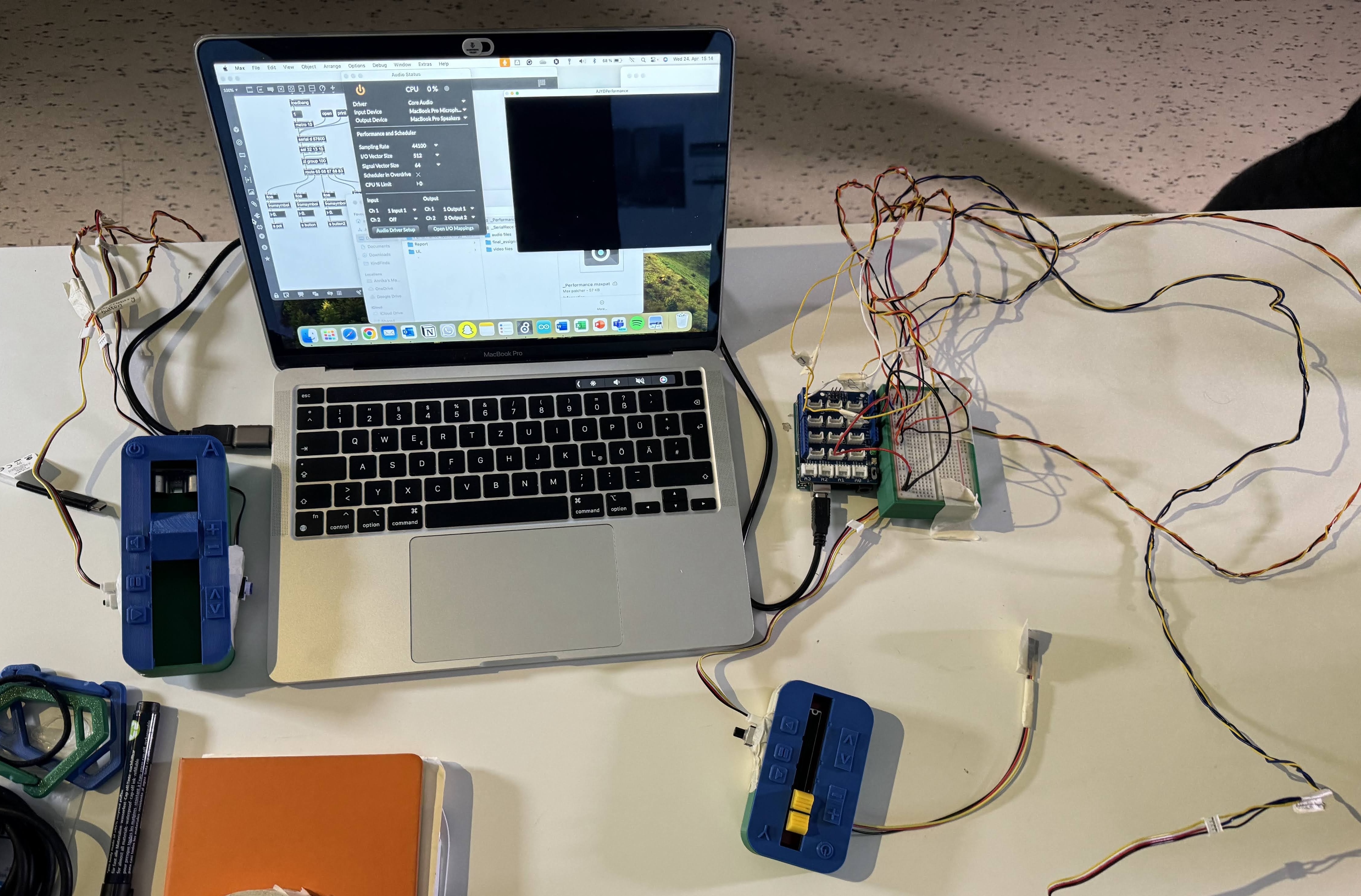
The project's interactive setup, combining physical and digital elements
The core idea was inspired by Neil Postman's observation that television transforms serious discourse into "show business," which can desensitise viewers. I wanted to translate this concept into an interactive installation. The performance highlights this by presenting a rapid succession of serious international news clips, only to be abruptly interrupted by a catchy, nonsensical advertisement. This juxtaposition is designed to make the audience aware of how easily the gravity of news can be trivialised.
I intentionally used fragmented news clips to mimic how information is often presented without full context, catering to the short attention spans of our audience. The performance progresses from local news to neighbouring countries and then to global news, creating a mix of languages that underscores the overwhelming and unfiltered nature of today's information landscape.
System and Interaction
The system was built using an Arduino-based input system that translates physical gestures or environmental data into digital signals. These signals are then sent to Max/MSP, which processes them in real-time to manipulate various audio and visual parameters. The Arduino code was written to continuously read these sensor values and transmit them serially to Max/MSP.
Two performers interact with the system using custom, 3D-printed remotes that house the sensors.
The key interactive elements include:
- Ultrasonic Ranger & Slider: Housed in 3D-printed remotes, these sensors allow the performers to control which video collage is displayed. The concept was that as a performer moves closer to the screen (or manipulates the remote), the news becomes more layered and overwhelming.
- Buttons: An LED button functions as the main "On Air" switch to start and stop the performance, while a secondary button switches control between the two performers' remotes.
- Potentiometer: Controls the audio volume, which is crucial for building intensity and creating a sense of being overwhelmed.
The Max patch uses a `MIXFADR` object for crossfading between up to seven video sources and a `PIXL8R` effect that progressively pixelates the video, blurring the lines between different news reports to reinforce our theme.
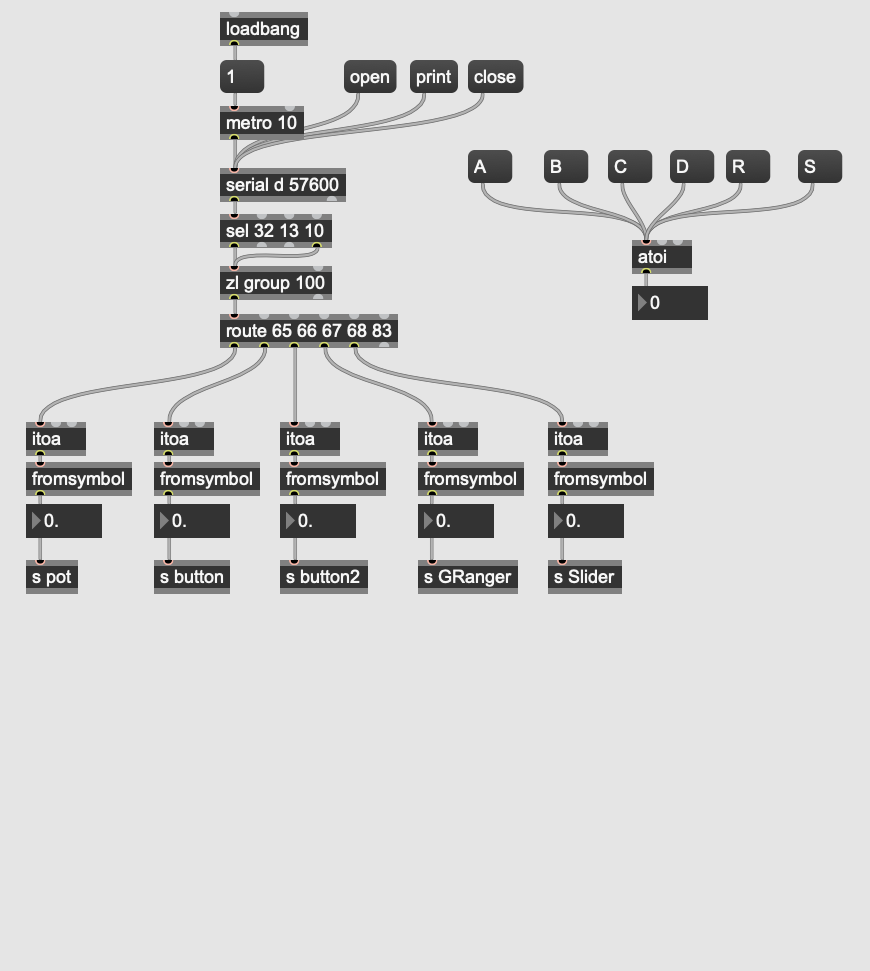
Max/MSP patch for serial communication with Arduino
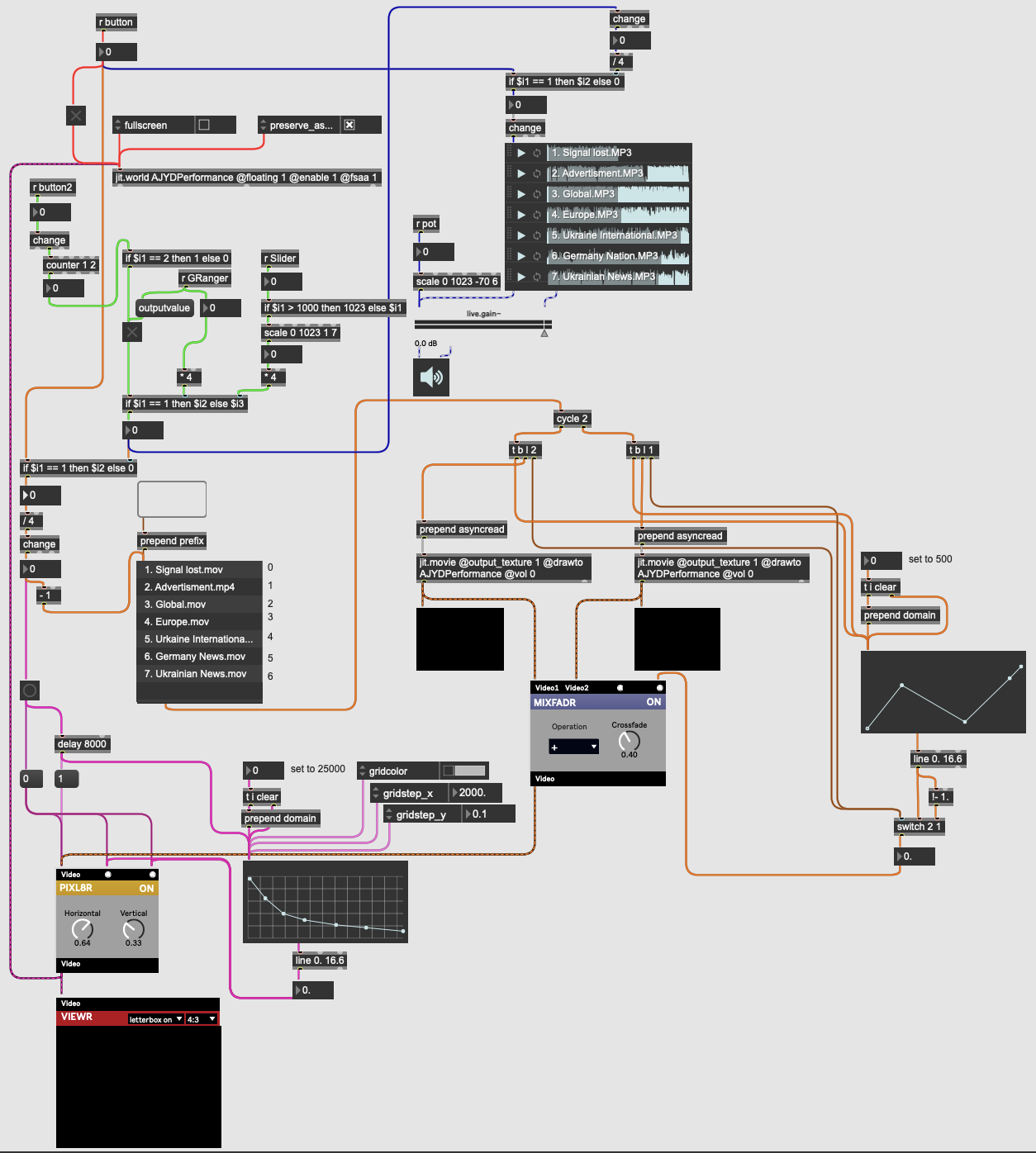
Max/MSP patch for manipulate various audio and visual parameters
Development Process
The process began with brainstorming and sketching out the core concepts and the flow of the performance. Then, I designed and 3D-printed custom enclosures for the sensors to create tangible, remote-like controllers, which enhanced the performance aspect. This involved significant trial and error, especially in designing a mechanism for the ultrasonic ranger to measure small distance changes within its enclosure reliably.
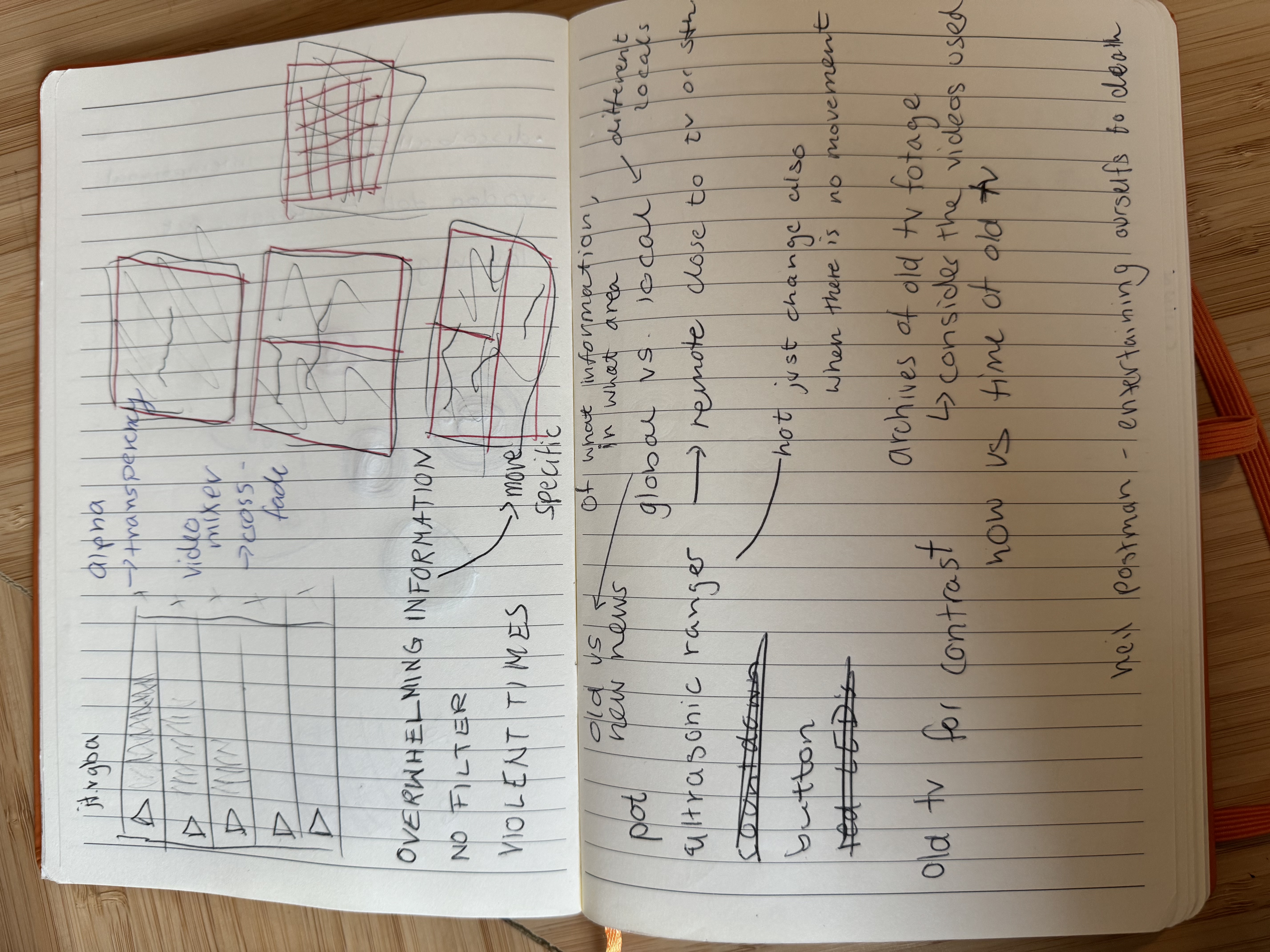
Early concept sketch of the project idea
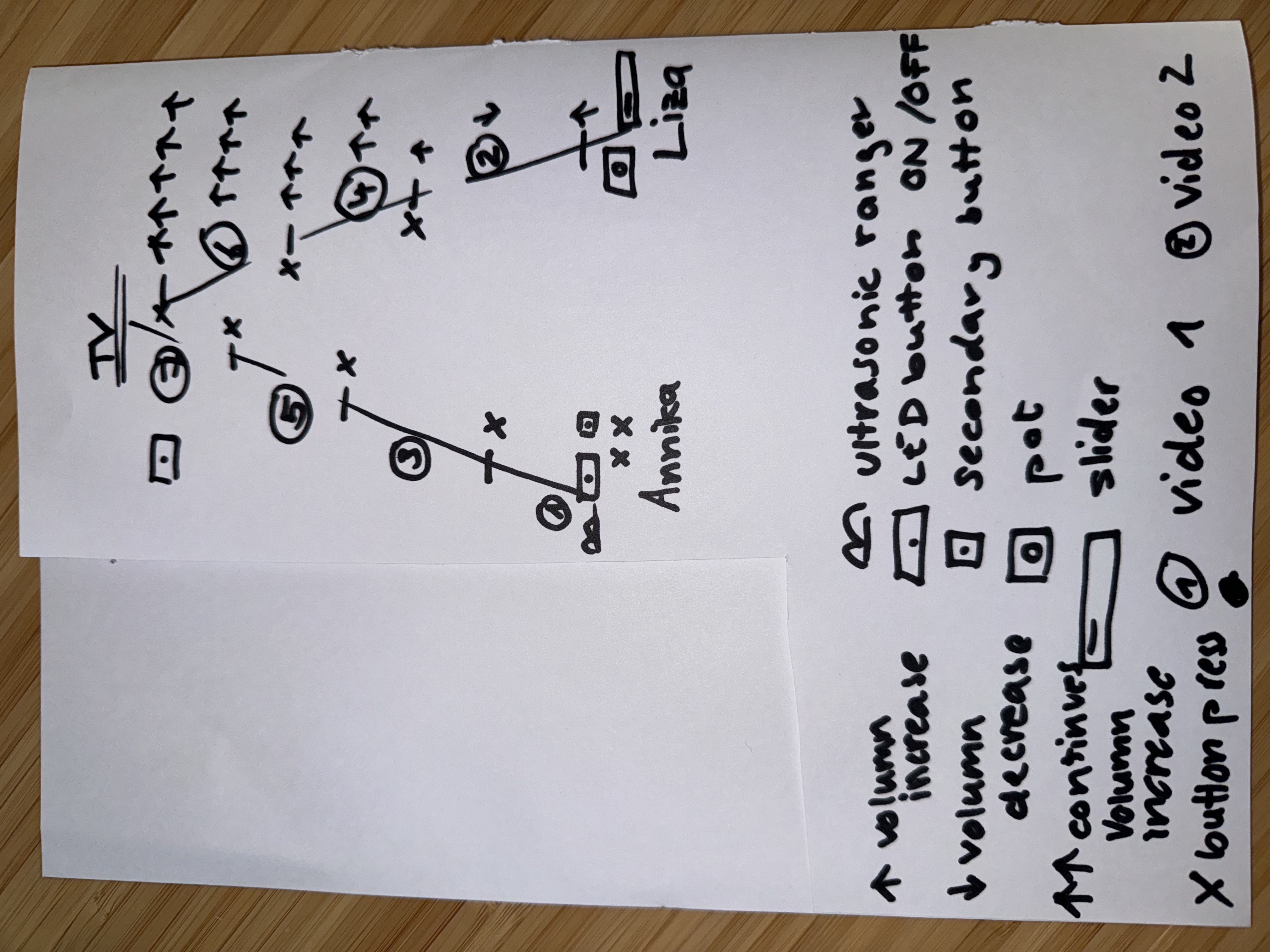
Sketch of the performance plan and sensor mapping
Reflection
This project was an invaluable learning experience in physical computing, interactive system design, and the integration of hardware and software. It solidified my understanding of how Arduino can act as a bridge between the physical and digital worlds, and how Max/MSP provides a powerful platform for real-time media manipulation.
Beyond the technical skills, "Amusing Ourselves to Death" challenged me to think critically about how interactive experiences can convey complex ideas and encourage user reflection. It highlighted the importance of a seamless user experience, where the technology fades into the background, allowing the message to take centre stage. This project demonstrated my ability to conceptualise, develop, and execute a multi-faceted interactive installation from start to finish.